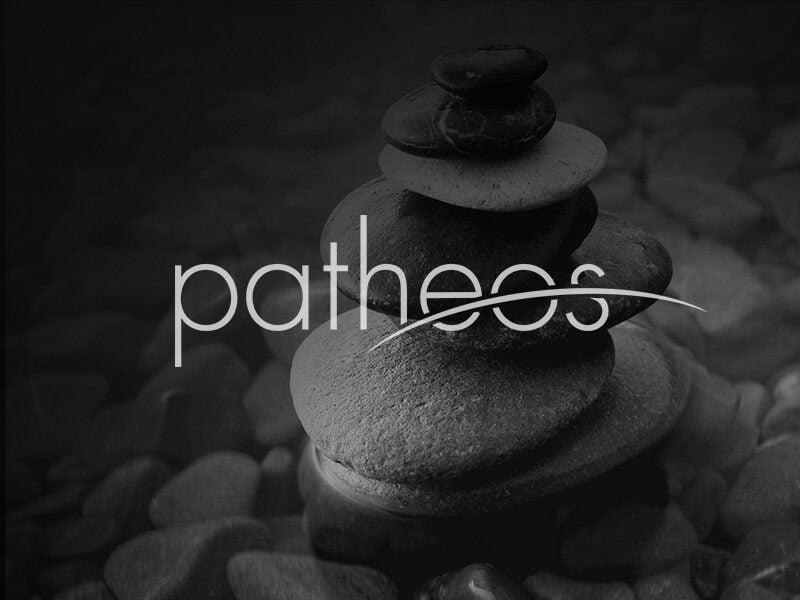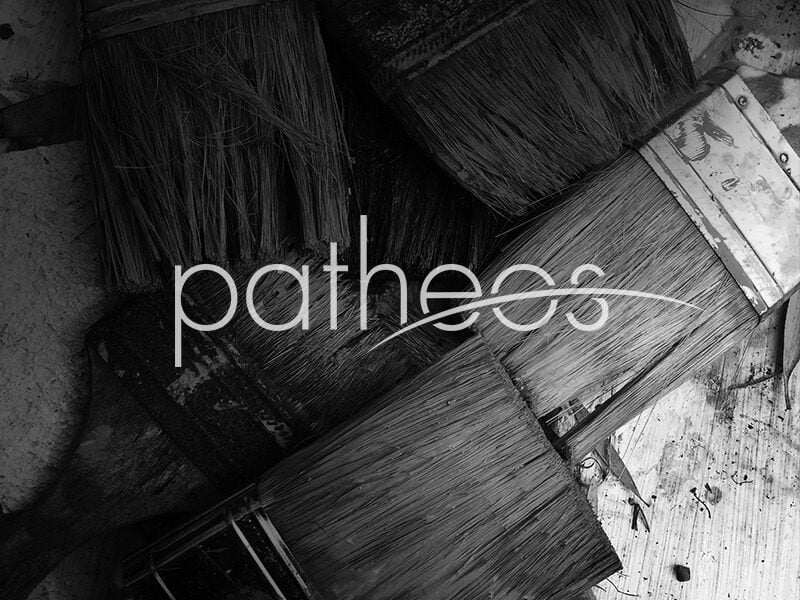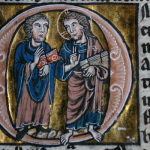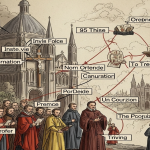Philadelphia, Pa., Dec 17, 2016 / 07:02 pm (CNA).- Martin Pistorius was a healthy 12-year-old boy living in South Africa with his family in the late 1980s when he was overcome with a mysterious illness. The doctors weren't sure what had come over Martin, but their best guess was cryptococcal meningitis. Over time, Martin lost his ability to move by himself, his ability to make eye contact, and eventually his ability to speak. The hospital told Martin's parents, Rodney and Joan Pistorius, that their son was in a vegetative state, and to take him home and make him comfortable. But approximately two years into this vegetative state, Martin woke up. He was aware of everything going on around him “like a normal person,” he told NPR – he just couldn't communicate. He spent 12 years in this state, most people thinking him a vegetable, until he was able to prove that he was conscious. Martin now owns his own business and has written a book about his experience. He lives in the United Kingdom with his wife. Maggie Worthen found herself in a similarly bleak situation in 2006. A senior a week away from graduating from Smith College, Smith suffered a massive stroke, leaving her unconscious and unable to speak or move. Doctors, assuming Maggie would not recover or regain consciousness, pressured Maggie's mother Nancy to remove the ventilator or withhold food and water to let her daughter die. They asked if they could harvest Maggie’s organs. But Nancy refused, believing that Maggie was more conscious and capable of recovery than the doctors thought. Maggie soon was able to breath on her own, and was able to communicate through eye movements her last few years of life before succumbing to pneumonia in August 2015 at the age of 31. The stories of Martin, Maggie and many others like them show a troubling misunderstanding of, or a tendency to misdiagnose, what is called the “permanent vegetative state,” or PVS, in the medical community. Edward Furton is an ethicist and director of publications with The National Catholic Bioethics Center in Philadelphia, Pennsylvania. The center offers a 24-hour hotline that Catholics can call with questions related to medical ethics, and Furton said they often receive calls from family members whose loved ones have been diagnosed as being in a vegetative state. “(They) are being told that their loved ones can’t feel anything, they’re completely unaware, that we can take away food and water it won’t bother them, they won’t even notice,” Furton told CNA. “These things I think are very dangerous views, because we should always presume that the patient has some level of consciousness.” Typically, medical doctors will assume that a patient is unconscious if there are no outward signs of consciousness, Furton said. But in some cases, such as in the cases of Martin or Maggie, that may not necessarily be true. Deacon Alan Rastrelli is a licensed physician with expertise in anesthesiology and palliative medicine with the Denver-based Divine Mercy Supportive Care center, where he also serves as a spiritual advisor to the staff. He said another common problem when diagnosing a patient who has suffered brain trauma is a confusion of terms and a tendency to jump to the worst assumption. “What I've been concerned about for some time, as I've been dealing with palliative care and bioethics and hospice care as a physician, is that sometimes the jump in the ICU is to go right to, ‘Oh this is a vegetative state, they’ll never come out of it.’ Or to say they’re brain dead or are in a comatose state when they haven’t done the right studies,” he said. “The terminology has been so confused over the last 10-15 years, that sometimes families are not sure what kind of decisions to make when they’re faced with a neurological insult,” Dr. Rastrelli added. The term brain-dead, for example, only came into common use when organ donation became possible. A patient has minimal brain stem function if any, and their heartbeat and breathing are able to be sustained only through machines. Over the years, it has become a clearer diagnosis, allowing for safer organ donation, Dr. Rastrelli said, although sometimes there are still misdiagnoses. New technologies, including brain scans that can detect brain activity in persons who may be outwardly unresponsive, may help doctors better understand and diagnose the level of consciousness of their patients. “It is making people pause a little bit more to say, well we think there’s nothing there, but wow, some areas of the brain light up when we talk about mom or dad or children, or something that they might remember,” he said. “With these new studies, maybe we won’t have to guess whether they feel or not, or hear or not, or suffer or not, we might be able to see if there’s still some activity there, and to show the opposite too, if there really isn’t.” Another issue with over-diagnosis of the permanent vegetative state is a tendency to underestimate a patient’s ability to recover and become aware, which can occur years after the initial incident causing unconsciousness.Research suggests that 68 percent of severely brain-injured patients who receive rehabilitation eventually regain consciousness, and that 21 percent of those are able to eventually live on their own. Yet unconscious patients are often too quickly dismissed as vegetative, disqualifying them from insurance on further rehabilitation efforts. “Patients like Maggie are routinely misdiagnosed and placed in what we euphemistically call ‘custodial care’ where they have no access to any treatments that might help them recover or give them a chance of engaging with others,” Dr. Joseph Fins, chief of the division of medical ethics at Weill, told Newsweek. There are times when additional measures, such as a ventilator or a feeding tube, would be considered extraordinary means of prolonging life and would not be ethically required by the Catholic Church, but each case is complex and unique, Dr. Rastrelli said. Typically, families are not required to keep their loved ones on ventilators if the person will never again breathe on their own. In the case of a feeding tube, a dying person’s body may reject the nutrients, putting the person at risk for infection or aspiration, but feeding tubes should typically not be withheld or removed unless there are proven adverse effects, Dr. Rastrelli added. “That person is still a person and we need to see if we can comfortably provide them with at least nutrition and hydration, not to the extreme of breathing machines and dialysis machines, if it’s not going to help, but as a comfort measure almost to allow them to have the nutrition that their body would normally be asking for,” he said. Dr. Rastrelli said he is also concerned about the over-diagnosis of the vegetative state in an age of increased pushes for legalized assisted suicide in that it could lead to cases of euthanasia, which differs from assisted suicide in that other people make end-of-life decisions for the dying person, including withholding food and water. “If you would talk to people in Compassion and Choices (the company behind the publicized case of Brittany Maynard), they would say that we don’t need any more disabled, society-dependent people to use up our resources if we’re not going to get them into a more functional, independent state,” he said. “They would say well they’re just going to be suffering and you’re just wanting to keep them alive, just because of your religious beliefs. So why not just let them die or why not just help them die? They’re going to die anyway so why not just do it now and end their suffering. It sounds very good in sound bites, but it’s very dangerous because other people are making those decisions and presumptions.” Catholics also have a different understanding of the human person, Furton said, in that they believe people are a union of body and soul, which is different than the prevailing beliefs in the current medical community, and could contribute to the tendency to over-diagnose patients as vegetative. “One of the main issues here is that the scientific community, which strongly influences the medical community, tends toward materialism,” Furton added. “So they see the human person as an assemblage of matter, and the matter has somehow come together to produce life and then the matter has also produced consciousness. So if there are no material indications of consciousness, they say the person can’t be conscious.” “We have to recognize that each of us has a soul, and that soul has its own inherent awareness, and it may indeed be completely functioning despite the fact that there are no outward signs of it,” he said. Pope John Paul II didn’t like the term “vegetative” because of its dehumanizing effect, Dr. Rastrelli noted. The late pontiff, and now saint, was himself an example of understanding when to let the dying process take its natural course, he added. When Parkinson’s ravaged his body, and he was overwhelmed with complications from pneumonia and various ailments, Pope John Paul II chose to forgo the emergency room and intensive care. Instead, he spent the last of his days in his room, where Mass was said, and he could receive the Eucharist and the anointing of the sick. “And there’s a chance that he could have been able to fight through that particular episode, but his body would have been another major notch lower in health, then he’d be facing the same thing not much longer from then,” Dr. Rastrelli said. Instead, “he passed away peacefully.” Receiving the sacraments is an important part of end of life care at Divine Mercy Supportive Care center, which follows the medical ethics of the Catholic Church. “So the Catholic perspective I think throws the most appropriate light on (end of life issues), in that on the one hand, we dignify life and we take care of people like we’re asked to do, human to human. But we also recognize that the whole reason we’re here in this world is that so we can be with God in eternity,” Dr. Rastrelli said. “We’re not going to fight tooth and nail to try and eek out every ounce of life, because we have the trust and the faith and the hope of our eternal life. So our church brings us prayer and sacraments and care…so that we can be born into the arms of Christ and have that hope and that comfort and peace.” This article was originally published on CNA Aug. 23, 2016. Read more















